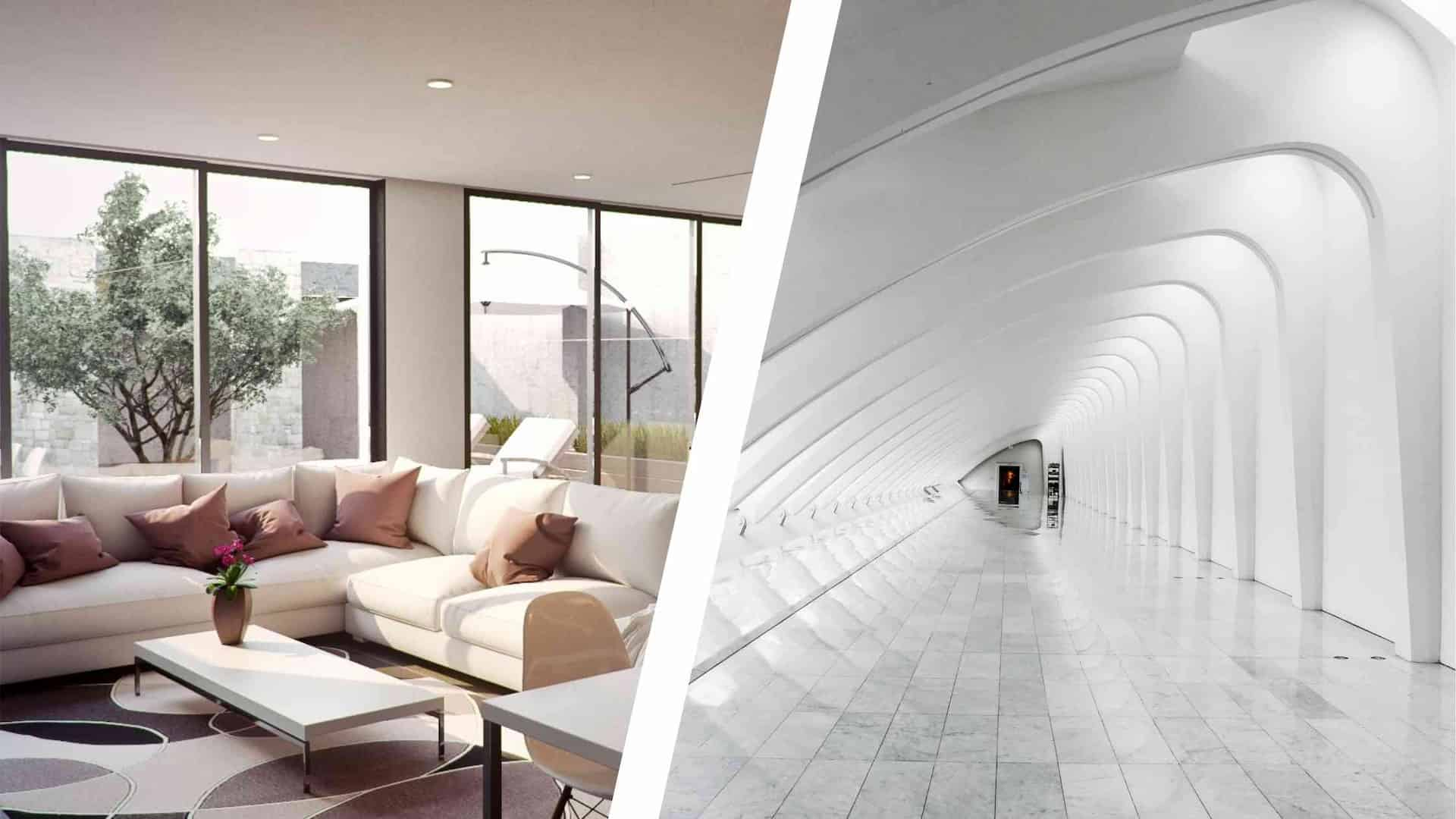
When it comes to crafting beautiful, functional spaces, two terms often come up: interior design and interior architecture. Although they sound similar and often overlap, they represent distinct fields with unique approaches and responsibilities. Understanding the difference between interior design and interior architecture can help you determine which professional you need for your next project, whether it’s redesigning a home, office, or commercial space.
What is Interior Design?
Interior design is the art and science of enhancing the interiors of a space to achieve a healthier and more aesthetically pleasing environment for the people using it. Interior designers focus on the look, feel, and functionality of a space, working closely with clients to create designs that match their vision and lifestyle.
Key Responsibilities of Interior Designers:
- Space Planning: Interior designers optimize the layout of a room, ensuring that the flow and functionality meet the needs of the users.
- Aesthetic Design: They select color schemes, furnishings, lighting, and decorative elements to create a cohesive and appealing look.
- Material Selection: Designers choose fabrics, finishes, and materials that align with the overall design concept, budget, and intended use of the space.
- Furniture and Decor: They curate furniture and decor items that complement the design while considering comfort and practicality.
- Client Collaboration: Interior designers work closely with clients, contractors, and other professionals to bring the design to life, often managing the project from concept to completion.
What is Interior Architecture?
Interior architecture, on the other hand, goes beyond the visual aspects of interior design to encompass the technical and structural elements of a space. Interior architects design, construct, and modify interior spaces, focusing on the building’s functionality, safety, and code compliance. Their work involves understanding how the interior of a building interacts with its structure, systems, and the people who use it.
Key Responsibilities of Interior Architects:
- Structural Modifications: Interior architects are responsible for altering or designing the structural components of a space, such as walls, ceilings, and floors.
- Technical Drawings and Blueprints: They create detailed architectural plans, including electrical, plumbing, and HVAC systems, to ensure the space is functional and compliant with building codes.
- Construction Knowledge: Their expertise in construction techniques allows them to oversee renovations, ensure structural integrity, and manage complex changes to interior spaces.
- Building Codes and Regulations: Interior architects must be knowledgeable about building codes, safety standards, and accessibility requirements to ensure the spaces they design are safe and compliant.
- Sustainable Design: They often incorporate sustainable and energy-efficient solutions into their designs, focusing on reducing the environmental impact of a space.
Comparing Interior Design and Interior Architecture
Understanding the key differences between interior design and interior architecture can help clarify which professional you need for your project.
1. Scope of Work
- Interior Design: Focuses on aesthetics, space planning, and furnishing. It’s about making spaces look beautiful and feel comfortable without altering the building’s structure.
- Interior Architecture: Involves structural changes, including reconfiguring spaces, adding or removing walls, and ensuring all elements meet safety and building codes.
2. Technical vs. Aesthetic Focus
- Interior Design: Leans towards the creative and decorative aspects, such as selecting colors, materials, and styles that reflect the client’s preferences.
- Interior Architecture: Concentrates on the technical and structural side, balancing design with practicality and ensuring the space works efficiently from a construction perspective.
3. Education and Training
- Interior Designers: Often have backgrounds in design, fine arts, or related fields. They study design principles, color theory, and furniture design.
- Interior Architects: Typically have formal education in architecture or a closely related discipline, including courses in building systems, structural engineering, and advanced construction techniques.
4. Licensing and Regulations
- Interior Designers: Generally do not require licensing but may have certifications from professional organizations like the American Society of Interior Designers (ASID).
- Interior Architects: Often need to be licensed, particularly if they perform work involving structural changes, and must adhere to rigorous industry standards.
How to Choose Between an Interior Designer and an Interior Architect
Choosing between an interior designer and an interior architect depends on the needs of your project:
- Hire an Interior Designer If: You are looking to refresh a space, update its look, or redesign without major structural changes. They are ideal for projects that focus on aesthetics, such as selecting new furniture, painting, and redecorating.
- Hire an Interior Architect If: Your project involves structural modifications, such as moving walls, adding new spaces, or updating a building’s layout to improve flow and function. They are essential when safety, building codes, and technical considerations are at the forefront.
Collaborating for the Best Results
For complex projects, hiring both an interior designer and an interior architect can provide the best of both worlds. Interior architects can handle structural changes and technical aspects, while interior designers can add the finishing touches that make a space inviting and visually pleasing. Working together, these professionals ensure that a space is not only beautiful but also functional, safe, and built to last.
Conclusion
Interior design and interior architecture are complementary fields that work hand in hand to create stunning, functional spaces. Understanding the differences between them will help you make informed decisions for your next project, whether it’s a minor makeover or a complete structural overhaul. By aligning your needs with the right professional, you can achieve a space that not only meets your aesthetic goals but also enhances the overall functionality and safety of your environment.